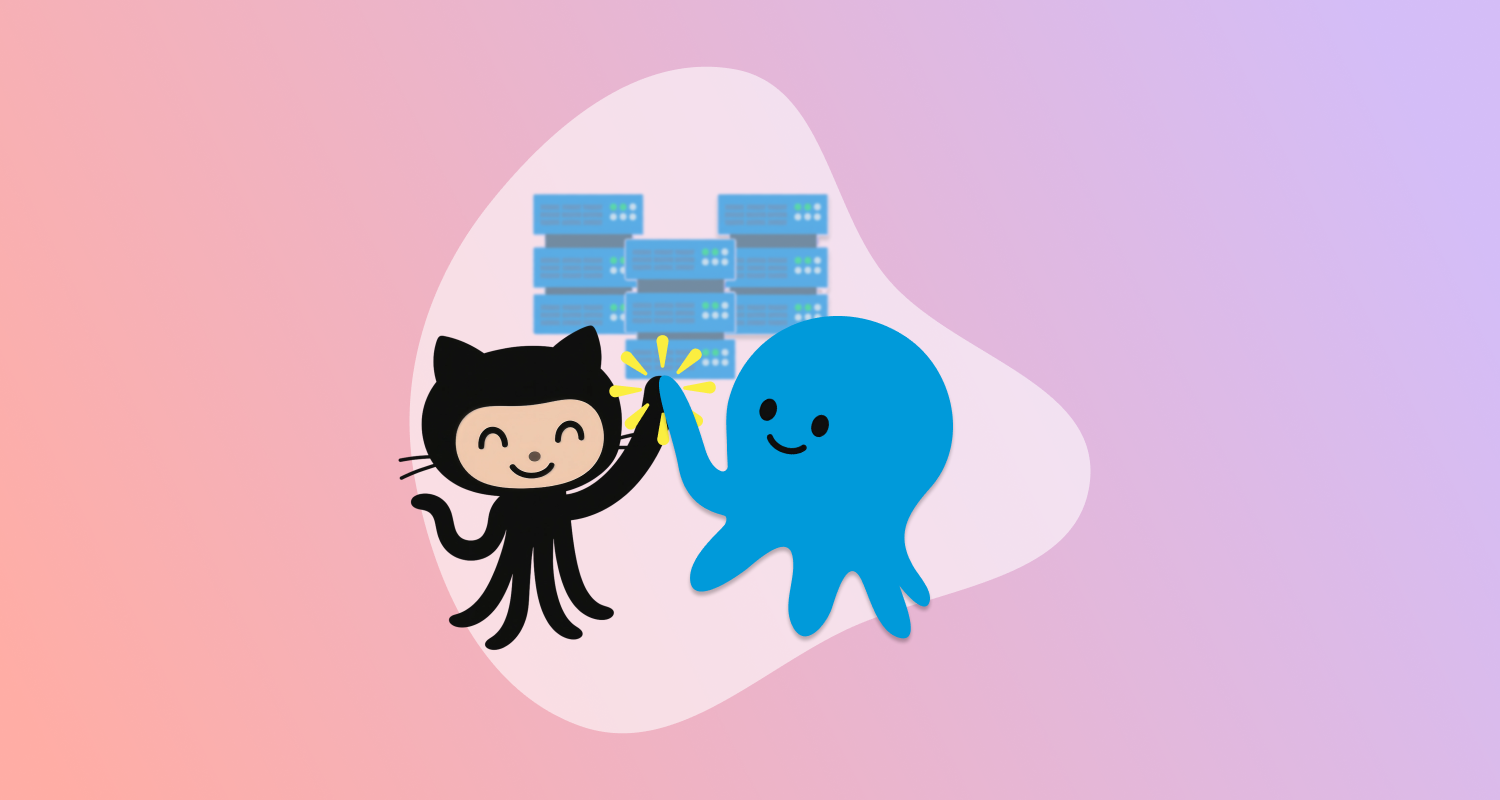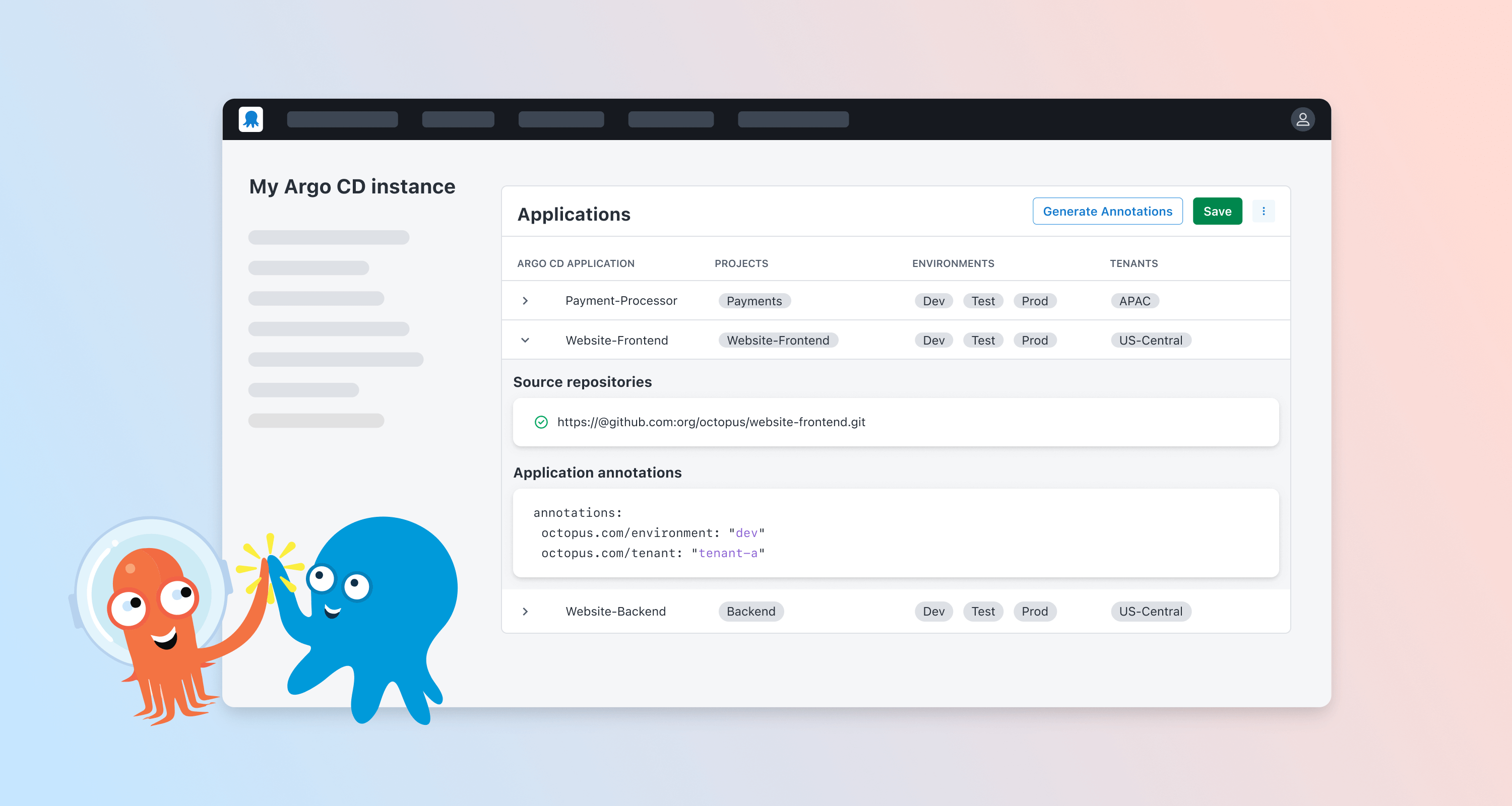We recently updated our Deployment Freeze feature with 2 new capabilities.
The first helps you set specific windows where you don’t want deployments going out. The second lets you prevent deployments to certain tenants without blocking the whole project.
These updates are available now for our Cloud customers, and our self-hosted customers can expect them in the 2025.1 release.
In this post, I introduce these new deployment freeze capabilities and explain how to use them.
Why you need deployment freezes
There are times when deploying new changes is just too risky. For example:
- Holiday seasons when your team is short-staffed.
- Critical business periods like tax season or elections.
- Important demos or testing cycles when you need system stability.
- When you need to prevent deployments to production during business hours.
- When your customers or branches are modelled with tenants and you need more granular control around when deployments to those customers can proceed.
Our improvements to deployment freezes help you handle all these cases. They let you control when and where deployments can happen, keeping your systems stable when it matters most.
Setting up your freezes
You can create deployment freezes for immediate use or schedule them for later. You get to choose:
- A clear name so everyone knows what the freeze is for
- When it starts and ends
- How long it lasts
- Which projects, environment, and tenants it affects
If you need to set up regular maintenance windows, you can configure automated recurring freezes that match your schedule.
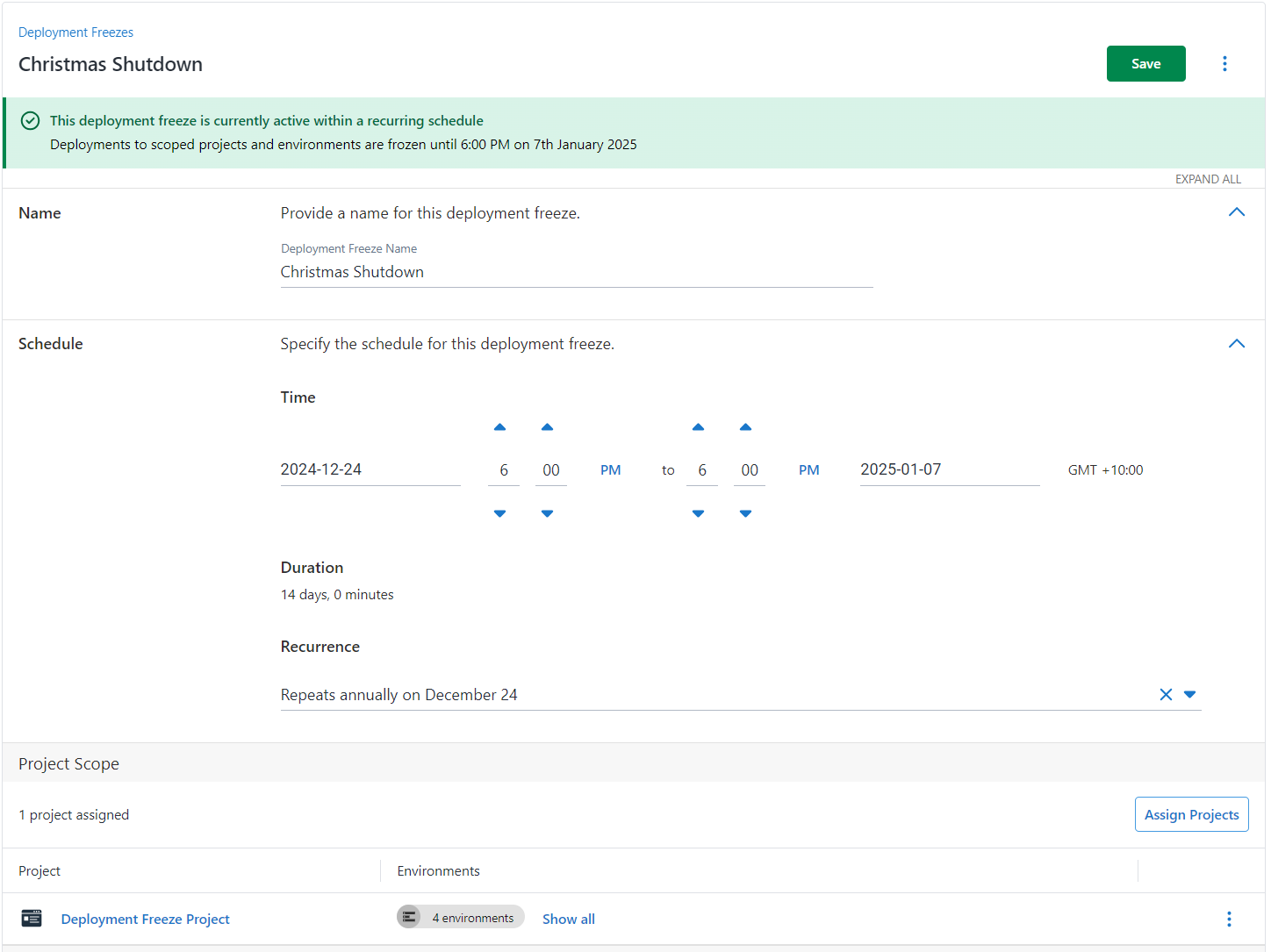
Choosing what to freeze with project and tenant freezes
You can control your freezes by scoping them to projects or tenants.
With project scopes, you can freeze specific projects by environment. For example, you might want to freeze your online store production deployments during Black Friday but keep working on your development and test environments.

Our new tenant scope lets you get even more specific. You can freeze deployments for particular tenants in selected projects and environments. This is helpful if you’re managing systems across different time zones or regions.

By mixing these options, you can create freezes that match exactly what your team needs.
What happens during a freeze?
Here’s what you can expect when a freeze is active:
- Existing deployments that started before the freeze will continue to completion.
- New deployments attempted during the freeze will need to provide an override reason to be able to deploy.
- Scheduled deployments that would start during a freeze period will not execute.
- Automatic deployments based on deployment target triggers still execute, which ensures your deployment targets stay updated when scaling up.
- Other automatic deployments, like scheduled deployments or automatic lifecycle promotions, get blocked during the freeze.
Setting up recurring freezes
You can also set up regular freeze periods with our recurring schedule feature. You can:
- Set up different freezes for each global region
- Match your maintenance windows
- Create daily protection windows
The system lets you set up these recurring patterns with:
- Daily windows to protect business hours
- Weekly schedules for regular maintenance
- Monthly patterns for release cycles
- Annual schedules for recurring business events
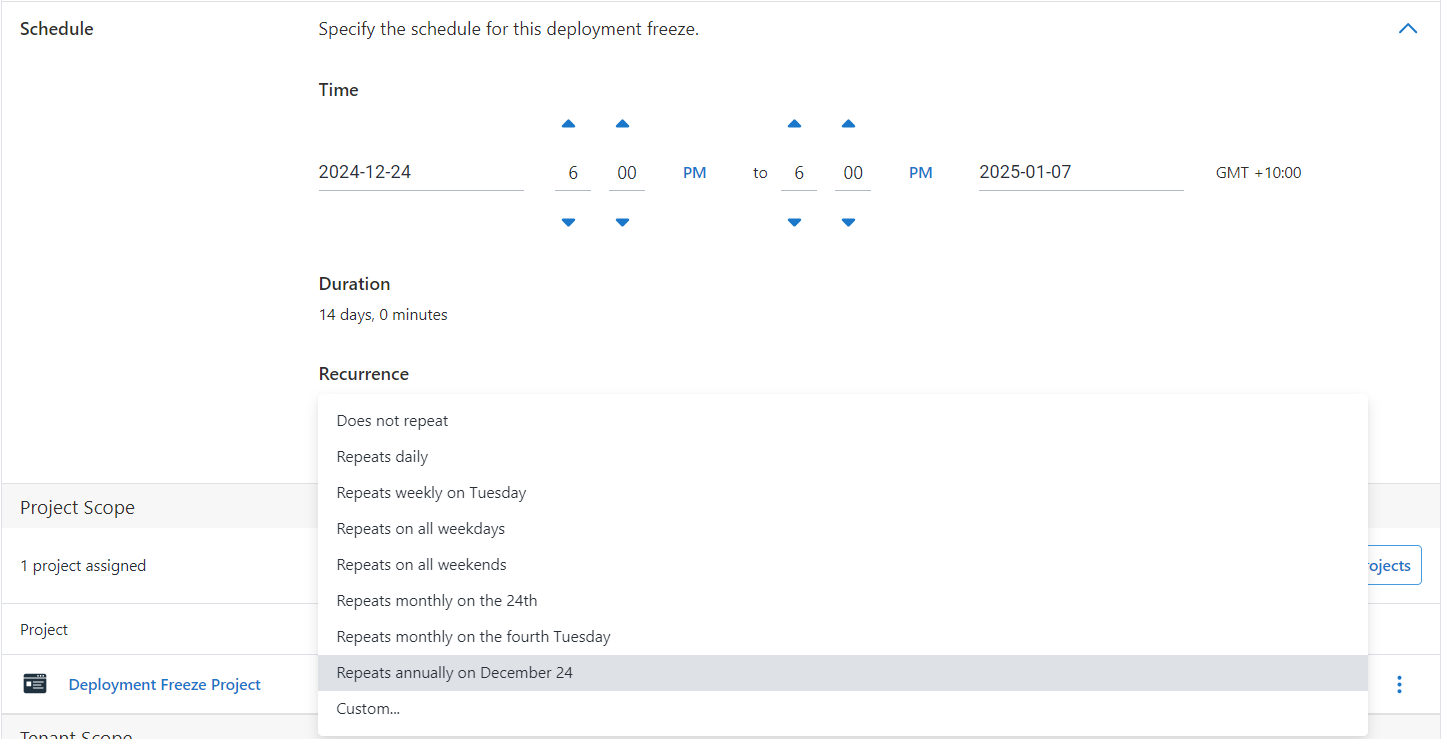
Override capabilities and audit trail
We know that sometimes you need to make exceptions. That’s why we’ve made it easy for authorized users to override active freezes. They just need to provide a reason, which Octopus keeps track of in the audit trail.
The audit trail keeps a record of:
- Freeze creation and modification
- Deployment Freeze Override and their justifications
- Deployment attempts during freeze periods
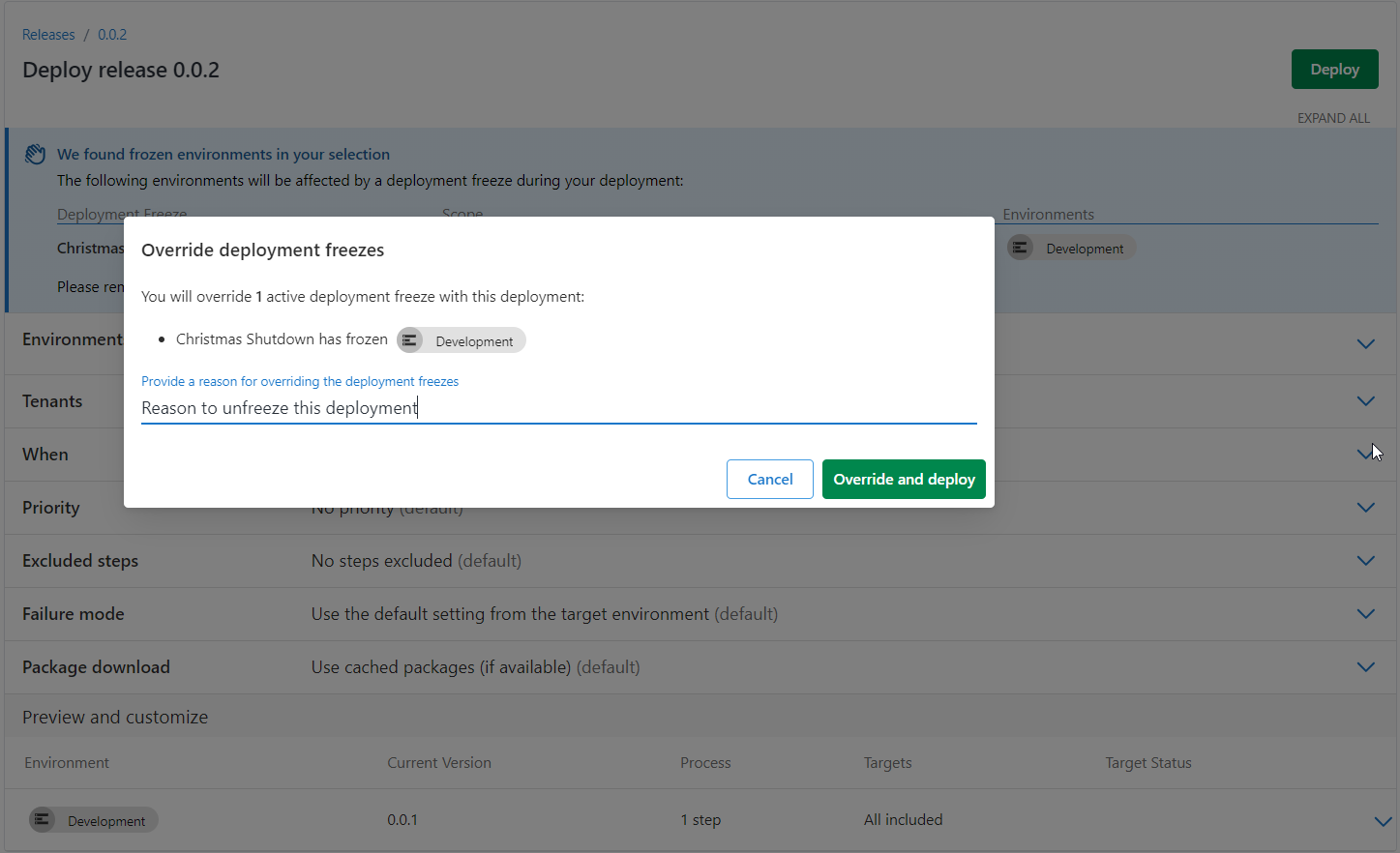
Automation and integration
You can automate and integrate deployment freezes into your workflows using the Octopus REST API or the Terraform provider. For example, you can use the Go client to automate the creation and management of deployment freezes as part of your CI/CD pipeline. The Terraform provider offers an octopusdeploy_deployment_freeze resource for creating and managing deployment freezes.
For more information, see the following resources:
Conclusion
Deployment freezes in Octopus let you control your deployment schedule. This feature helps you protect critical systems during peak times. It helps with reduced staffing and coordinating deployments across teams. It lets you stay agile while maintaining stability.
To get started or learn more, you can read our deployment freezes documentation.
Happy deployments!


